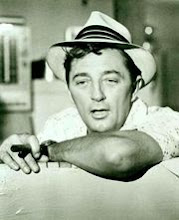Over the weekend, the New York Sun took a shot at Ben Bernanke and a whole host of economists that ridiculed Sarah Palin for her immediate criticism of the Fed’s second round of quantitative easing as inflationary and damaging to the US dollar. At the time, even the Wall Street Journal’s pages could barely contain their derision for Palin’s warning of inflation impacting food prices and eroding consumer buying power just when they were most needed for economic recovery. With the dollar tumbling and gas and food prices soaring, the Sun wonders whether we could do worse than to put Palin in Bernanke’s place:
The big question as Chairman Bernanke gets set for his first quarterly press conference is how Sarah Palin was able to figure out sooner than everyone else that the Federal Reserve’s campaign of quantitative easing wouldn’t work. Disappointment in the Fed’s policies is being reported this morning at the top of page one of the New York Times. It reports that “most Americans are not feeling the difference” from the Fed’s “experimental effort to spur a recovery by purchasing vast quantities of federal debt.” It reports that “a broad range of economists say that the disappointing results show the limits of the central bank’s ability to lift the nation from its economic malaise.”
It’s a terrific story, and well-timed, given that on Wednesday Mr. Bernanke will break tradition and meet with the press. It is part of the Fed’s effort to get ahead of what is emerging as a public relations catastrophe, as gasoline is nearing six dollars a gallon at some pumps, the cost of groceries is skyrocketing, and the value of the dollars that Mr. Bernanke’s institution issues as Federal Reserve notes has collapsed to less than a 1,500th of an ounce of gold. Unemployment is still high. Shakespeare couldn’t come up with a better plot. But how in the world did Mrs. Palin, who is supposed to be so thick, manage to figure all this out so far ahead of the New York Times and all the economists it talked to?
The New York Times tried putting a good spin on the Fed’s efforts, but as the Sun notes, it’s a doomed effort. And even Fed members have begun publicly pushing back against QE2:
“I wasn’t a big fan of it in the first place,” said Charles I. Plosser, president of the Federal Reserve Bank of Philadelphia and one of the 10 members of the Fed’s policy-making board. “I didn’t think it was going to have much of an impact, and it complicated the exit strategy. And what we’ve seen has not changed my mind.”
One big problem with QE2 is that it attacked the symptoms rather than the problems:
As the economy sputtered last summer, Mr. Bernanke indicated in an August speech that the Fed would start a second round of quantitative easing, soon nicknamed QE 2. The initial response was the same: Asset prices rose, interest rates fell, and the dollar declined in value.
But in addition to being smaller, and solely focused on Treasuries, there also was a problem of diminishing returns. The first round of purchases reduced the cost of borrowing by persuading skittish investors to accept lower risk premiums. With markets closer to normalcy, Mr. Bernanke warned in his August speech that it was not clear that the Fed would have comparable success in persuading investors to accept even lower rates of return. …
Another indication of its limited success: Borrowing has not grown significantly, suggesting that corporations — which are sitting on record piles of cash — are not yet seeing opportunities for new investments. Until they do, some economists argue that the Fed is pushing on a string.
The actual problem in the economy is that government policies and high deficits portend massive tax increases in the near future, and regulatory adventurism promises higher operational costs. With the current administration sending those signals loudly and clearly, capital investors have no good reason to get off the sidelines and put their capital to work. The Fed has no control over that; they can only adjust monetary policy for a problem that monetary policy doesn’t impact significantly. Bernanke and the Fed attacked the one problem they could address — the risk of deflation — and kicked off inflation instead.
Many of us predicted exactly this outcome last fall when the Fed launched QE2, including Sarah Palin. We need to worry less about who’s running the Fed and more about who’s running the federal government. That’s where the problems can actually get solved.
Update: Conservatives4Palin has a good roundup on this.
NY Sun: How about sending Palin to the Fed?
4/25/2011 10:15:45 AM Ed Morrissey, HOTAIR
Subscribe to:
Post Comments (Atom)


No comments:
Post a Comment